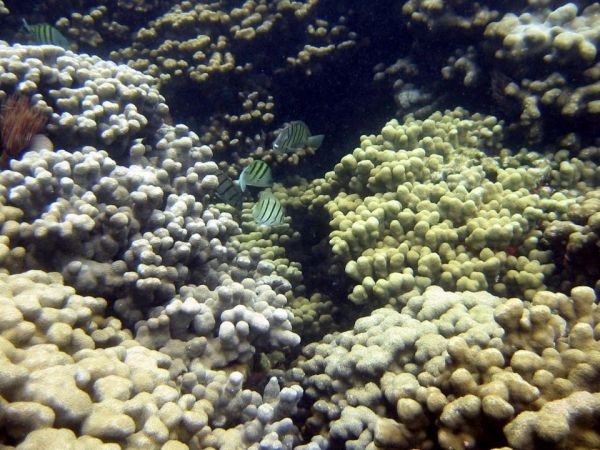Scientists have completed the first comprehensive assessment of UV-filters in surface seawater, sediment, and coral tissue from multiple coral reefs around the island of Oahu, Hawaii. UV-filters are active ingredients in sunscreens, but are also added to many other products, including textile, plastics, and paint to prevent photo degradation. The UV-filters oxybenzone and octinoxate have received attention by policy makers regarding their potential impact on corals. The research will help provide a baseline for future risk assessments.
Globally corals are in serious decline with major threats from increasing temperatures due to climate change and disease. New threats from chemical contaminants in seawater are an emerging area of concern, particularly near coral reef areas with high-density population, tourism, or recreational activities.
The detection of sunscreen active ingredients (i.e., UV-filters) in the aquatic environment has raised concerns over potential adverse impacts on coral reefs. However, there is very limited scientific data on their environmental concentrations in seawater near coral reefs in Hawaii. To help address these data deficiencies, University of Maryland Center for Environmental Science and University of Maryland, Baltimore County researchers measured the concentration of 13 UV filters, including oxybenzone and octinoxate, in seawater, sediment, and coral tissues. Other organic chemicals (e.g., sucralose and surfactants, synthetic hormones and polycyclic aromatic hydrocarbons [PAHs]) were also analyzed in the study.
Read more at University of Maryland Center for Environmental Science
Photo: Scientists have completed the first comprehensive assessment of UV-filters in surface seawater, sediment, and coral tissue from multiple coral reefs around Oahu, Hawaii. (University of Maryland Center for Environmental Science/Carys Mitchelmore)


